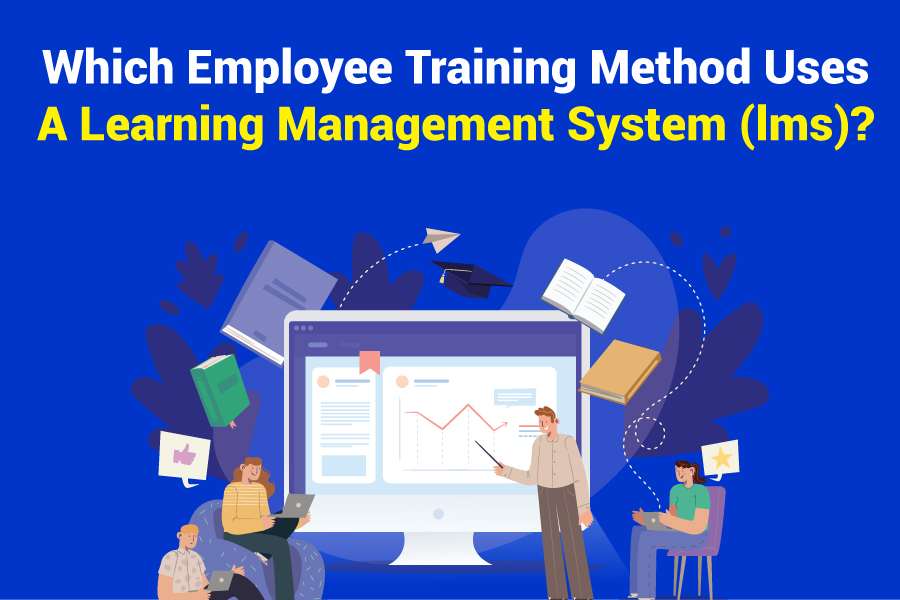Discover how a Learning Management System (LMS) can enhance your employee training methods. An LMS centralizes training resources, making it easier to deliver, track, and manage educational content. Key training methods that benefit from LMS integration include online courses, which offer flexibility and interactive learning; blended learning, which combines in-person and online training; and onboarding programs, ensuring new hires receive consistent, comprehensive introductions to your company. By leveraging an LMS, organizations can streamline training processes, reduce costs, and improve employee engagement and retention. Explore how these methods can transform your training approach and maximize the effectiveness of your LMS platform.
Which Training Methods Benefit Most From LMS Integration?
A Learning Management System (LMS) has transformed the way organizations approach employee training by providing a centralized, flexible, and scalable platform. Several training methods benefit significantly from LMS integration, making it a powerful tool for enhancing learning outcomes. Here are the key methods that leverage LMS technology effectively:
Online Courses: Online courses are perhaps the most straightforward application of an LMS. They provide employees with the flexibility to learn at their own pace, anytime and anywhere. LMS platforms can host a variety of content types, including videos, interactive modules, and quizzes, which engage learners and facilitate understanding. This method is ideal for delivering standard training materials, compliance courses, and skill development programs, ensuring consistency across the organization.
Blended Learning: Blended learning combines traditional face-to-face instruction with online components. An LMS supports this method by managing and delivering the online part of the training, such as supplementary resources, virtual workshops, and discussion forums. This approach allows employees to benefit from interactive online activities while still receiving the personal touch of in-person training. It maximizes learning opportunities and reinforces classroom instruction, making it a versatile and effective method.
Onboarding Programs: Onboarding new employees is crucial for ensuring they integrate smoothly into the company culture and understand their roles. An LMS is particularly effective for onboarding because it can standardize the training process and provide a comprehensive introduction to company policies, procedures, and tools. New hires can access onboarding modules, complete necessary certifications, and track their progress through the LMS, ensuring a consistent and efficient onboarding experience.
Certification and Compliance Training: Compliance and certification training are essential for meeting industry standards and regulations. LMS platforms streamline compliance training LMS process by providing easy access to required courses, tracking completion, and managing certifications. Automated reminders and progress tracking ensure that employees stay up-to-date with mandatory training, reducing the risk of non-compliance and enhancing organizational accountability.
Continuous Learning and Development: Continuous learning is vital for employee growth and adaptation in a dynamic work environment. An LMS supports continuous development by offering a range of learning resources, from advanced skill training to leadership development programs. Employees can set personal learning goals, access on-demand content, and participate in online communities for ongoing support and knowledge sharing.
LMS integration enhances various training methods by offering flexibility, scalability, and comprehensive tracking. Whether through online courses, blended learning, onboarding programs, compliance training, or continuous development, an LMS provides the tools needed to create an effective and efficient training environment.
What Factors Should You Consider When Choosing An LMS For Employee Training?
Selecting the right Learning Management System (LMS) is a crucial decision that can significantly impact the effectiveness of your employee training programs. With numerous options available, it’s essential to evaluate several key factors to ensure you choose an LMS that aligns with your organizational needs and goals. Here are the critical considerations to keep in mind:
- User-Friendliness and Accessibility: The LMS you choose should be intuitive and easy to navigate for both administrators and users. A complex or cumbersome interface can lead to frustration and hinder the learning experience. Look for a system with a clean, user-friendly design and robust support options. Accessibility features, such as mobile compatibility and multilingual support, are also crucial to accommodate diverse user needs and ensure that employees can access training materials from any device.
- Integration Capabilities: An LMS should seamlessly integrate with other systems used within your organization, such as Human Resource Information Systems (HRIS), Customer Relationship Management (CRM) tools, and content management systems. This integration ensures that data flows smoothly between platforms, allowing for streamlined processes and comprehensive reporting. Evaluate the LMS’s ability to connect with existing tools and consider whether it supports integration with third-party applications or custom APIs.
- Scalability and Flexibility: Your LMS should be able to scale with your organization’s growth and adapt to evolving training needs. Consider whether the system can handle an increasing number of users and courses as your organization expands. Additionally, flexibility in course creation and management is essential for accommodating different training formats and styles, such as online courses, blended learning, and live sessions.
- Reporting and Analytics: Effective training programs rely on data-driven insights to measure success and identify areas for improvement. Choose an LMS with robust reporting and analytics features that provide detailed information on learner progress, course completion rates, and performance metrics. Customizable reports and dashboards can help you track key performance indicators (KPIs) and make informed decisions to enhance your training initiatives.
- Support and Training: A reliable support system is vital for resolving any issues that may arise during LMS implementation and use. Assess the vendor’s customer support options, including the availability of helpdesk services, training resources, and community forums. Ensure that adequate training is provided for administrators and users to maximize the system’s capabilities and ensure a smooth transition.
- Cost and Budget Considerations: Finally, consider the total cost of ownership, including initial setup fees, ongoing subscription costs, and any additional expenses for customization, support, and upgrades. Compare different LMS options to find one that fits your budget while meeting your needs. Be mindful of hidden costs and evaluate the long-term value the system provides in relation to its price.
By carefully considering these factors, you can select an LMS that enhances your employee training programs, supports your organizational goals, and delivers a positive learning experience.
The Impact Of LMS on Traditional Classroom Training Methods
The rise of Learning Management Systems (LMS) has significantly influenced traditional classroom training methods, leading to transformative changes in how training and education are delivered. While traditional classroom settings remain valuable, integrating LMS technology offers a range of benefits that enhance the learning experience. Here’s a look at how LMS impacts traditional training methods:
Enhanced Flexibility and Accessibility
Traditional classroom training is often constrained by time and location, requiring participants to be present at specific times and places. LMS platforms address these limitations by providing a flexible learning environment. Employees can access training materials, complete modules, and participate in discussions at their convenience, from any location with internet access. This flexibility accommodates diverse schedules and learning preferences, making training more accessible to a broader audience.
Blended Learning Opportunities
LMS technology supports blended learning, a method that combines face-to-face instruction with online components. This approach allows instructors to deliver core content through LMS while supplementing it with in-person sessions for practical exercises, group discussions, and hands-on activities. Blended learning maximizes the benefits of both formats, leveraging the interactive capabilities of LMS and the personalized touch of traditional classroom interactions.
Consistent Training Delivery
One of the challenges with traditional classroom training is ensuring consistency across different sessions and locations. With an LMS, training content is standardized and delivered uniformly, reducing discrepancies and ensuring that all employees receive the same information. This consistency is particularly valuable for compliance training and onboarding, where uniformity is crucial.
Streamlined Administration and Tracking
LMS platforms simplify administrative tasks associated with traditional training methods. Scheduling, registration, and attendance tracking become more efficient through automated processes. Additionally, LMS provides detailed reporting and analytics, allowing administrators to monitor learner progress, assess the effectiveness of training programs, and identify areas for improvement. This data-driven approach enhances the management of training initiatives.
Enhanced Engagement and Interactivity
Traditional classroom training often relies on passive learning methods, such as lectures and presentations. LMS platforms introduce interactive elements, such as multimedia content, simulations, and quizzes, which engage learners more effectively. Gamification features and social learning tools, like discussion forums and peer reviews, further enhance engagement and knowledge retention.
Cost Efficiency
Integrating an LMS with traditional training methods can lead to cost savings by reducing the need for physical materials, travel expenses, and venue rentals. Digital content and online resources can be updated and distributed at a fraction of the cost, making training more economical and sustainable.
In summary, the integration of LMS with traditional classroom training methods brings flexibility, consistency, and efficiency to the learning process. By leveraging the strengths of both approaches, organizations can create a more dynamic and effective training environment that meets the needs of today’s workforce.
Conclusion
In conclusion, integrating a Learning Management System (LMS) into employee training methods offers a transformative approach to learning and development. LMS enhances online courses, supports blended learning, streamlines onboarding, and ensures compliance with certification requirements. By providing flexible, scalable, and interactive learning experiences, an LMS maximizes the effectiveness of various training methods and drives organizational growth. As businesses seek to optimize their training programs, leveraging the capabilities of an LMS ensures that employees receive consistent, engaging, and efficient training, ultimately contributing to a more skilled and productive workforce.
FAQ
Who uses a learning management system?
Organizations of all sizes and industries use LMS, including businesses, educational institutions, and government agencies, to manage and deliver training.
How many companies use an LMS?
Over 90% of organizations use an LMS for employee training and development, reflecting its widespread adoption across various sectors.
Which LMS has the most users?
As of recent data, Moodle is one of the most widely used LMS platforms, known for its extensive user base and global reach.













































Leave a Reply